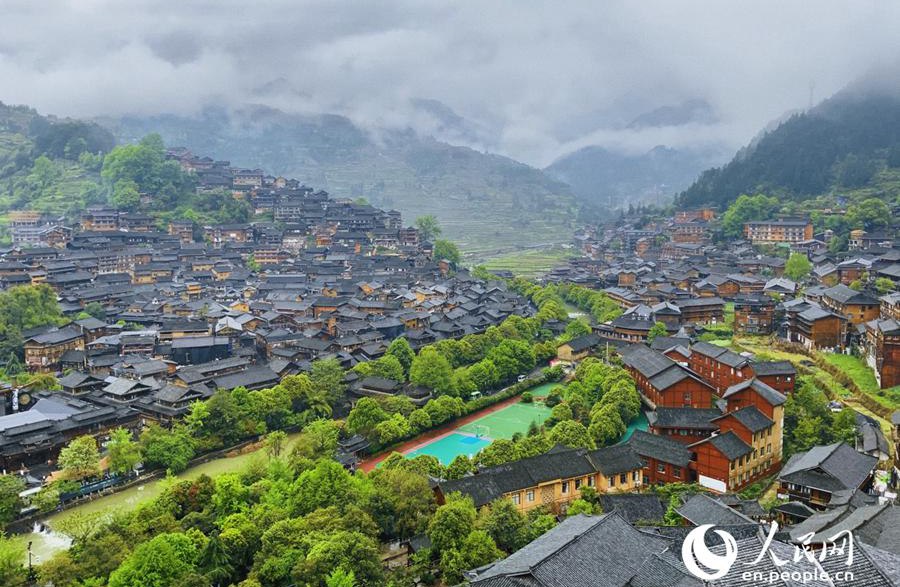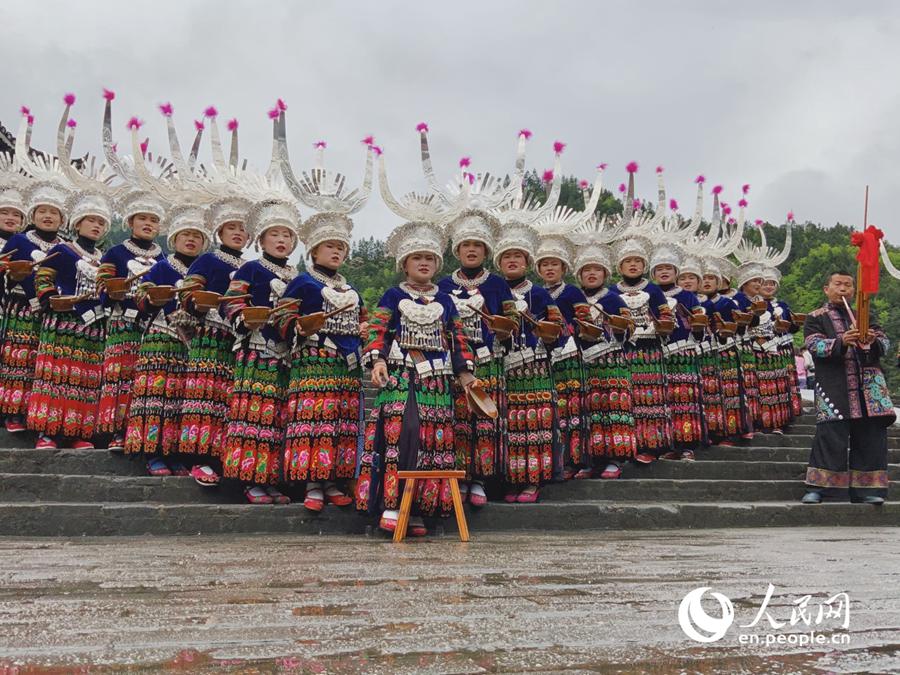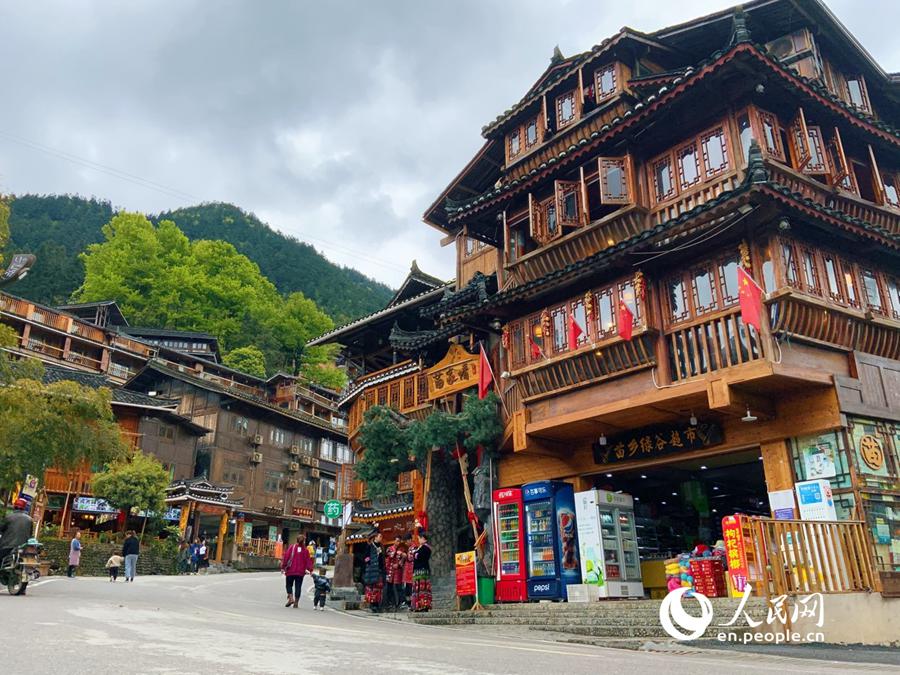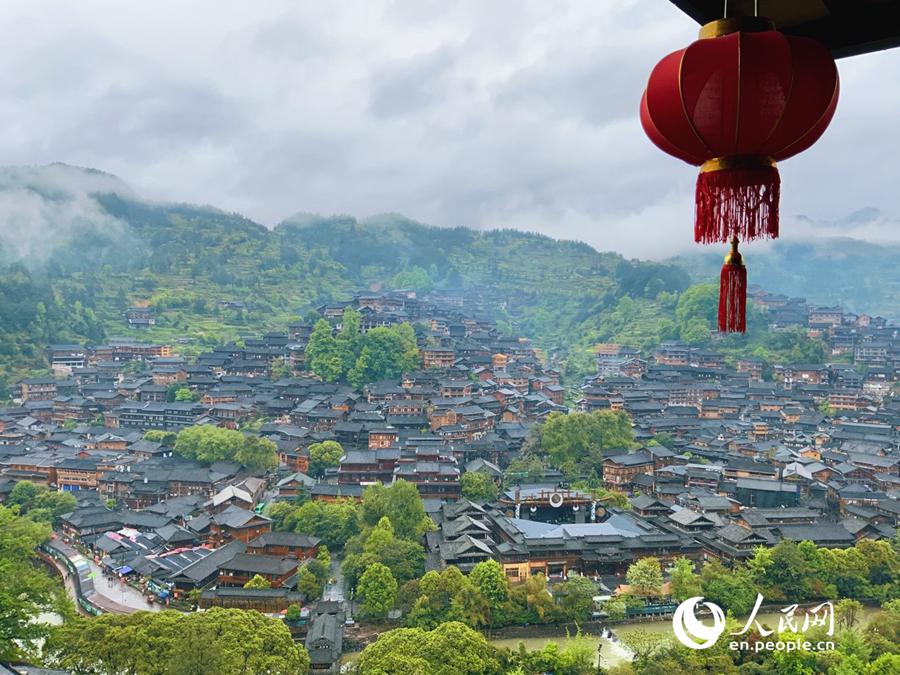Nestled in the lush mountains in Leishan County, southwest China's Guizhou Province, Xijiang Qianhu Miao Village rolls quietly from the creeks winding in silvery loops across the mountain ridges. Crystal ponds and patches of paddy fields are sprinkled among the terraces. Here and there, a hamlet appears, topped by the soaring cornices of its ancestral houses. Along the riverbanks, locals fish, farm and bask in the sun. It is a daily scene of the Miao people, one that has been playing out over centuries.
Several "wind and rain bridges", an architectural combination of bridge, corridor, veranda and pavilion, are scattered throughout the village. The buildings are used to improve "Fengshui," producing a mysterious vibe that attracts visitors from around the globe.

Xijiang Qianhu Miao Village is the world's largest Miao village. (People's Daily Online/Kou Jie)

With a population of more than seven million, the Miao people form one of the largest ethnic minorities in southwest China. (People's Daily Online/Kou Jie)
Set in a natural basin, the Xijiang Qianhu Miao Village is dubbed "thousand-household village," and has a history of over 2,000 years. Over 99 percent of the local population are from the Miao ethnic group, while the village, which consists of ten Miao hamlets, is home to 1,432 households and 6,000 residents.
Due to its geographical remoteness, the village was a poverty-stricken backwater before 2008. According to statistics, the local average income was 1,431 yuan in 2005, which was less than half of China's average income back then. Starting from 2008, local authorities and business leaders decided to transform the village into a tourism site that featured unique Miao culture. It has since become an "open air museum" showcasing Miao's traditional art and culture, including local festivals, singing and dancing, silver work, architecture and food.
Currently, over 90 percent of the Miao residents work in local restaurants, hotels and cultural institutions. The local authority has also established a foundation to support the revival of local Miao culture, allocating 18 percent of the village's entrance fee revenues to Miao residents, a number that reached 32 million yuan in 2019. The village's success in eliminating poverty has been hailed as the "Xijiang model", providing valuable experience to the world.

With the coming of dusk, swallows begin to soar over the village, which awakens once again with its exuberant night life. (People's Daily Online/Kou Jie)
Entering the village via zigzagging cobble trails, travellers are immediately thrown into the hustle and bustle of a commercial hub of crowded streets that throng with humanity. Vendors, artisans, well-dressed Miao maidens in shining silvery bracelets walk beside travellers and idlers, while sightseeing vehicles and carts struggle to make headway through this river of people.
The thickest crowds usually gather in the business districts centred in the village. It is a brawling, open-air market, with lines of traditional log houses and rows of shops crammed in every corner of the cobbled streets. According to statistics, the local authorities have established over 270 stalls to help local residents start their own small businesses, such as snack bars, souvenir shops and photo booths. All local residents can sign up for a stall, and draw lots to decide who can be chosen.

The Xijiang Miao Village is now a famous cultural tourism site in China. (People's Daily Online/Kou Jie)
Enclosed by its walls of plank and mud, the village is a self-contained kingdom of art and leisure. Its ancestral houses, mansions and hovels alike, are built of logs and bamboo. The wooden stilted houses, also known as Diao Jiao Lou in Chinese, are situated on the mountain slopes, while the unique decoration of their windows, rails and porches give them a strange beauty that is alien to the stolid masonry of modern cities in China.
At the centre of the village, on the crest of the hills around the edges of a torrential river, stand several magnificent ancient wooden stilted houses, which in both ancient and modern times could be considered the physical heart of the Miao village. The traditional wooden stilted houses are built without any nails or rivets. The buildings usually have three stories, with the first being used for storing tools and manure, as well as keeping livestock. The second is used as a living space, while the third is mainly used for storing grain and other daily necessities.
